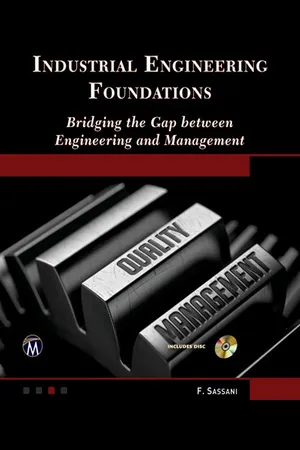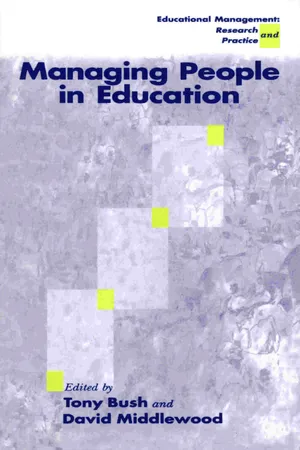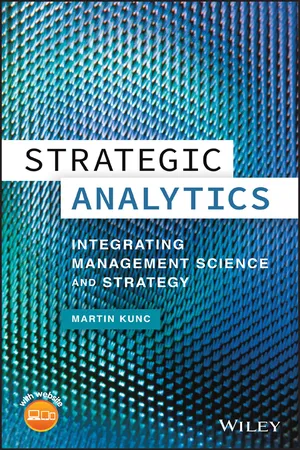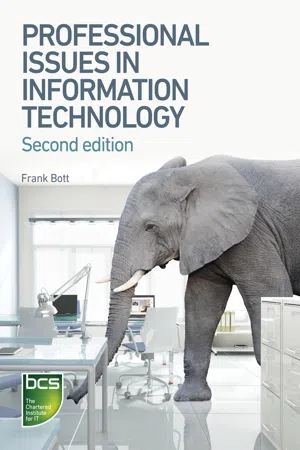Business
Organizational Structure Management
Organizational structure management refers to the design and arrangement of roles, responsibilities, and reporting relationships within a company. It involves creating a framework that outlines how various activities and processes are coordinated and controlled. Effective organizational structure management can enhance communication, decision-making, and overall efficiency within the business.
Written by Perlego with AI-assistance
Related key terms
1 of 5
11 Key excerpts on "Organizational Structure Management"
- eBook - PDF
Managing As Mission
Nonprofit Managing for Sustainable Change
- Lori Heninger(Author)
- 2017(Publication Date)
- Productivity Press(Publisher)
It’s important to understand the nature of the words because management was, and in some cases still is, a value-laden dividing line in the workplace. In companies or organizations, management—as in the act of managing—has been, and often still is, the organiza-tion and coordination of activities in order to achieve defined objectives. Those activities have been categorized as forecast-ing, organizing, planning, commanding, coordinating, con-trolling, and directing an organization's resources ( Business Dictionary , 2016). Management systems are formally defined as the framework of policies, processes, and procedures used to ensure that an organization can fulfill all tasks required to meet the mission (FitSM, 2016), and managers are seen to have the power and responsibility for decision-making to ensure this takes place ( Business Dictionary , 2016). Management structures are the overarching ways the com-pany or organization is, well, organized; this can be found illustrated in an organizational chart. This rest of this chapter will consider traditional manage-ment styles and functions, teasing out differences between structure and hierarchy relating to management. It will then move to the act of managing, which includes two important elements that are not often considered in traditional defini-tions: relationships and people, although this is changing in 132 ◾ Managing As Mission both management literature and practice. We then consider the role of individual change in successful managing, and finally, we will ask the question: Do you want to manage? I would go back to the World Values Survey and pro-pose that we are in lightly charted waters in organizations and companies; we have many years of codified ways to run companies and organizations rooted in traditional and survival modalities, and we are now moving to a secular-rational and self-expressive culture. - eBook - PDF
- John R. Schermerhorn, Jr., Barry Wright, Daniel G. Bachrach(Authors)
- 2017(Publication Date)
- Wiley(Publisher)
Organizing as a Management Function 201 11.1 Organizing as a Management Function LEARNING OBJECTIVE 11.1 Describe organizing as a management function and the difference between formal and informal organization structures. Learn More About What is organization structure? • Formal structures • Informal structures and social networks Organizing is the process of arranging, connecting, and inte- grating people and other resources to accomplish a goal. Its purpose as one of the basic functions of management is to create a division of labour and then coordinate processes and results to achieve a common purpose. Figure 11.1 shows the central role that organizing plays in the management process. Once plans are created, the man- ager’s task is to ensure that they are carried out. Once strategy is set and plans are made, organizing launches the processes of implementation and accomplishment by clarifying jobs and working relationships. It identifies who does what, who is in charge of whom, and how different people and parts of the organization relate to and work with one another. All of this, of course, can be done in many different ways. The challenge for managers is to choose the best organizational form to fit the firm’s strategy and other situational/market demands. What Is Organization Structure? The way in which the various parts of an organization are arranged is usually referred to as the organization struc- ture. It is the system of tasks, workflows, reporting rela- tionships, and communication channels that connect the work and activities of diverse individuals and groups within a firm. An organization’s structure should both effectively allocate tasks through a division of labour and coordinate performance results. A structure that accomplishes both well helps to implement an organization’s strategy. 2 Yet as stated earlier, the problem for managers is that it is much easier to describe what a good structure does than it is to create one. - No longer available |Learn more
Industrial Engineering Foundations
Bridging the Gap between Engineering and Management
- Farrokh Sassani(Author)
- 2017(Publication Date)
- Mercury Learning and Information(Publisher)
Chapter 7 2 Chapter O RGANIZATIONAL S TRUCTURE 2.1 INTRODUCTION An organization is an association of individuals supported by resources and capital working collectively to achieve a set of goals and objectives. There are many factors in effectively managing an organization, and one of the most essential is the organizational structure. Without a structure that defines the flow of information and physical entities, control of operations, and the tasks and responsibilities, it is doubtful that anything will function efficiently and as desired. It is then clear that the goals of any nature will be difficult to achieve.* Considering a manufacturing company as an example, Figure 2.1 shows the diversity of the functions and entities that could be involved. Referring to Figure 2.1, it is hard to imagine how an enterprise can operate without thoughtfully bridging so many islands of activities and prescribing appropriate rules of conduct. Organizational structure and management are so important that it is essential that when even two individuals cooperate in a work effort, the tasks are divided, but only one of them directs the activities of the team. Otherwise, conflicting situations will arise. Therefore, every enterprise must have a well-integrated * We frequently refer to production and manufacturing environments to exemplify an organization that reflects the engineering scope of this book and to allow us to highlight the key concepts better. In general, these concepts can be equally applied to many orga- nizations that have identifiable entities and functions, and provide products or services. 8 INDUSTRIAL ENGINEERING FOUNDATIONS organizational structure for its personnel and departments, the form of which depends on the goals of the enterprise. A consulting firm, a hospital, or a chemical plant, for example, all have different organizational needs and structures. - eBook - PDF
- John R. Schermerhorn, Jr., Daniel G. Bachrach(Authors)
- 2014(Publication Date)
- Wiley(Publisher)
260 CHAPTER 11 ■ Organization Structures and Design Summary TAKEAWAYQUESTION 1 What is organizing as a management function? • Organizing is the process of arranging people and resources to work toward a common goal. • Organizing decisions divide up the work that needs to be done, allocate people and resources to do it, and coordi- nate results to achieve productivity. • Structure is the system of tasks, reporting relationships, and communication that links people and positions within an organization. • The formal structure, such as that in an organization chart, describes how an organization is supposed to work. • The informal structure of an organization consists of the informal relationships that develop among members. FOR DISCUSSION If organization charts are imperfect, why bother with them? TAKEAWAYQUESTION 2 What are the traditional organization structures? • In functional structures, people with similar skills who perform similar activities are grouped together under a common manager. • In divisional structures, people who work on a similar product, work in the same geographical region, serve the same customers, or participate in the same work process are grouped together under common managers. • A matrix structure combines the functional and divisional approaches to create permanent cross-functional project teams. FOR DISCUSSION Why use functional structures if they are prone to functional chimneys problems? TAKEAWAYQUESTION 3 What are the types of horizontal organization structures? • Team structures use cross-functional teams and task forces to improve lateral relations and problem solving at all levels. • Network structures use contracted services and strategic alliances to support a core organizational center. • Boundaryless structures or boundaryless organizations combine team and network structures with the advantages of technology to accomplish tasks and projects. - eBook - PDF
- Tony Bush, David Middlewood, Tony Bush, David Middlewood(Authors)
- 1997(Publication Date)
- SAGE Publications Ltd(Publisher)
4 MANAGEMENT STRUCTURES Tony Bush INTRODUCTION: WHAT DO WE MEAN BY STRUCTURE? Structure refers to the formal pattern of relationships between people in organisations. It expresses the ways in which individuals relate to each other in order to achieve organisational objectives. O'Neill's (1994, p. 109) definition captures the main features of structure: 'Structure embodies both a formal description of roles, authority, relationships, and positions within the organisation ... and also the pragmatic notion that structural design should promote and facilitate organisational effectiveness. Structure ... is created to distribute and co-ordinate the work of people in the pursuit of organisational goals and objectives.' The notion of 'creation' is significant because it serves to stress the potential for managers to restructure the organisation to meet changing requirements. While, as we shall see later, pre-existing structures may inhibit change, leaders do have the power to shift the organisation to reflect new circumstances. Structures are often represented by organisation charts which show the authorised pattern of relationships between members of the institution (Bush, 1995, p. 29). However, there is a tension between the focus on struc-ture and the individual characteristics which people bring to organisations. Janes et aJ. (1989, p. 429) emphasise that 'management structures have to be both interpreted and implemented by human beings'. Effectiveness depends on both the nature of the structure and on the individual qualities that people bring to the organisation. Janes et a1. (ibid., p. 431) summarise the connection in further education: The behaviour of staff and the attitudes that underpin their behaviour can be thought of as being influenced by the college's structure ... One of the 46 Managing people in education things that organisation structure does is to articulate who does what and in association with whom. - eBook - PDF
- John R. Schermerhorn, Jr., Daniel G. Bachrach(Authors)
- 2017(Publication Date)
- Wiley(Publisher)
Organization Charts Describe Formal Structures of Organizations. When managers organize things, they arrange people and jobs into effective work relation- ships. They spell out who does what, who is in charge of whom, and how people and work units should cooperate. This creates what we call the organization structure, a formal arrangement of people, tasks, positions, and reporting relationships. You probably know the concept of structure best in terms of an organization chart. This is a diagram of positions, or job titles, and reporting relationships, or the hierarchy of authority within a team or organization. 5 This chart describes a division of labor designed to support organizational performance by assigning important tasks to individuals and groups. You can learn from an organization chart, but only in respect to formal struc- ture, as shown in the margin. This is the “official” structure or the way things are supposed to operate. 6 Think of it as a “best guess” for how to align positions, people, and responsibilities. But as with most work, things don’t always go as intended. Cir- cumstances, tasks, and people change. And every time they do, the formal structure moves a bit further away from the situation it is supposed to fit. This is why managers often find themselves tinkering with the formal structure to get the alignment right. Organizations Also Have Informal Structures. SITUATION: A worker in his office cubicle overhears a conversation in the next cubicle. Words such as “project being terminated” and “job cuts will be necessary” are used. At lunch, he shares this with friends. Word quickly spreads around the building that the employer is going to announce layoffs. Organization structure is a formal arrangement of tasks, reporting relationships, and communication linkages. An organization chart describes the arrangement of work positions within a team or organization. The division of labor assigns important tasks to individuals and groups. - eBook - PDF
Management Theory in Action
Real-World Lessons for Walking the Talk
- Eric H. Kessler(Author)
- 2010(Publication Date)
- Palgrave Macmillan(Publisher)
Management Theory in Action 212 (3) Analyze why it was more or less able to capitalize on the design’s strengths and reduce its dysfunctions. (4) Leverage these insights to appropriately design and better manage within an organically oriented context. To properly select and construct an organic or matrix structure, I will . . . 10.6 Constructing a Coherent Culture Ask Yourself: Do organizations have a “personality”? What is this thing called organizational or corporate culture? How do you see it? Build it? Learn it? Manage it? Management Theory: Management theory describes an organization’s culture as its set of shared meaning and values within a system that work to influence the daily thinking, behavior, and interactions of its members. This definition has several important components. First, culture is shared. It is a collective understanding that connects employees to each other in a common framework and corporate philosophy. The links that culture creates work to institutionalize its central tenets throughout the organi- zation. Second, culture is about meaning and values. It promotes a funda- mental worldview and methodology for making sense of things. As such it embodies distinct business principles and priorities about what ends are good and what means are acceptable. Third, culture affects the everyday work environment. Its deep-seeded corporate assumptions and values rise to the surface and can be seen in the language that people use (how they dress, talk to each other, use acronyms and jargon), repetitive rites and rit- uals that they follow (orientation, bonding, promotion, and exit ceremo- nies), stories that they tell (“heroes” who were rewarded for conforming or “villains” who were punished for going against the grain), and symbols that are displayed (decorations, artwork, office designs, prominent charts, or banners). Fourth, culture is about influence and control. It orients its members in a certain direction. - eBook - ePub
Strategic Analytics
Integrating Management Science and Strategy
- Martin Kunc(Author)
- 2018(Publication Date)
- Wiley(Publisher)
Small businesses may not have the same needs in terms of organizational structure and control systems since the owner is inherently part of the implementation of the strategy. Owners make most of the key decisions. In large organizations, strategy formulation and implementation needs to be clearly communicated. One of the reasons for the development of organizations is the efficiency in producing products and delivering services, which originates from specialization and division of labor to tackle processes. However, specialization and division bring two problems: coordination to integrate the different tasks performed; and cooperation to align the interests of stakeholders performing the different tasks in the processes (Grant, 2013). Cooperation can be achieved through the establishment of hierarchies. Hierarchies employ different mechanisms to achieve coordination such as incentives (both positive and negative), authority and shared values. In terms of coordination, the methods are rules and norms, routines, and mutual adjustment (Grant, 2013). 8.1 Organizational Components 8.1.1 Structure Organizational structure is the basic outcome of the implementation of hierarchies. Hierarchy is a system in which members of an organization are ranked according to relative authority in vertical segments. Simply put, each segment includes a member of the organization, a supervisor (who supervises other members) and subordinates. In this way, cooperation is achieved through top‐down control. This is known as bureaucracy where there is not only top‐down control but also division of labor and formalization of routines through standard rules with the intention to obtain a rational and efficient organization (Grant, 2013). Simultaneously, a hierarchy helps to economize coordination when it is compared with self‐organizing - eBook - PDF
Wiley Pathways Healthcare Management
Tools and Techniques for Managing in a Health Care Environment
- Donald N. Lombardi, John R. Schermerhorn, Jr., Tere Stouffer(Authors)
- 2015(Publication Date)
- Wiley(Publisher)
Health care network Different medical services joining together to provide comprehensive health care, often sharing the services of one business office and laboratory. Horizontal structures New organizational models, which emphasize integration and cross-functional teamwork, of- ten while gaining the advantages of networking through information technology. Informal structure The unofficial but often critical working rela- tionships among organizational members, re- gardless of formal titles and relationships. Integration The level of coordination achieved among an or- ganization’s internal components. Matrix structure Organizational strategy that combines ele- ments of both the functional and divisional structures. Organizational design The process of aligning organizational struc- tures and cultures to best serve the organiza- tion’s mission, strategy, and objectives. KEY TERMS 83 Organization chart Diagram that identifies key positions, job titles, lines of authority, and communication within an organization. Organization structure The system of tasks, workflow, reporting rela- tionships, and communication channels that link the diverse parts of an organization. Organizing The process of arranging people and other re- sources to work together to accomplish a goal. Process reengineering The systematic and complete analysis of work processes and the design of new and better ones with the goal of focusing attention on the future, on patients, and on improving ways of doing things. Process value analysis Managers identify and carefully evaluate each step in a workflow. Each step must be impor- tant, useful, and add value to the overall pur- pose of the organization; if not, the step is eliminated. Quality circle A popular form of employee involvement team in which a group of workers meets regularly to discuss and plan specific ways to improve work quality. Restructuring The process of changing an organization’s struc- ture in an attempt to improve performance. - eBook - PDF
- John R. Schermerhorn, Jr., Daniel G. Bachrach(Authors)
- 2021(Publication Date)
- Wiley(Publisher)
How can you work with them to develop a staffing plan that includes flexible work options that meet everyone’s needs, including yours? Test Prep 8 Answers to Test Prep questions can be found at the back of the book. Multiple-Choice Questions 1. The main purpose of organizing as a management function is to . a. make sure results match plans b. arrange people and resources to accomplish work c. create enthusiasm for the needed work d. link strategies with operational plans 2. An organization chart is most useful for . a. mapping informal structures b. eliminating functional chimneys c. showing designated supervisory relationships d. describing the shadow organization 3. Rumors and resistance to change are potential disadvantages often associated with . a. virtual organizations c. functional chimneys b. informal structures d. cross-functional teams Engagement for Career Readiness 161 4. When an organization chart shows that vice presidents of market- ing, finance, manufacturing, and purchasing all report to the presi- dent, top management is using a structure. a. functional c. network b. matrix d. product 5. The “two-boss” system of reporting relationships is both a potential source of problems and one of the key aspects of structures. a. functional c. network b. matrix d. product 6. A manufacturing business with a functional structure has recently acquired two other businesses with very different product lines. The president of the combined company might consider using a structure to allow a better focus on the unique needs of each product area. a. virtual c. divisional b. team d. network 7. An organization using a structure should expect that more problems will be solved at lower levels and that top managers will have more time free to engage in strategic thinking. a. virtual c. functional b. matrix d. product 8. The functional chimneys problem occurs when people in different functions . - Frank Bott(Author)
- 2014(Publication Date)
- BCS, The Chartered Institute for IT(Publisher)
4 STRUCTURE AND MANAGEMENT OF ORGANISATIONS After studying this chapter, in the context of organisations with which you are familiar, you should: y be able to recognise how they are structured; y be able to suggest alternative possible structures and identify their advantages and disadvantages; y be aware of the effect that decisions about organisational structure may have on individual employees. 4.1 ORGANISATIONAL MODELS As we said at the start of Chapter 3, an organisation is a group of people working together in a formal way. What this means is that the work that has to be done is shared between these people and that there are rules about who does what. How the work is shared and how tasks and people are grouped together – the structure of the organisation – will vary very much from organisation to organisation. It is surprising, however, that organisational structures have much more in common than might be expected. In this chapter, we shall describe the most common ways of structuring organisations. 4.1.1 The bureaucratic model Organisational theory, the study of how organisations are structured and how they work, goes back to end of the 19th century. The founders of the theory were sociologists like Max Weber and Mary Parker Follett, and practical business people like Henri Fayol and Lyndall Urwick. They developed what is known as the bureaucratic model. In a modified form, this model still describes the organisational structures to be found in most large, and many smaller, organisations. (Note that bureaucratic here is simply descriptive; the pejorative sense developed later.) The ideal bureaucratic organisation was thought to have the following characteristics: 1. All tasks are split up into specialised jobs, in which jobholders become expert; management can thereby hold them responsible for the effective performance of their duties. 35 PROFESSIONAL ISSUES IN INFORMATION TECHNOLOGY 2. The performance of each task is governed by precise rules.
Index pages curate the most relevant extracts from our library of academic textbooks. They’ve been created using an in-house natural language model (NLM), each adding context and meaning to key research topics.










